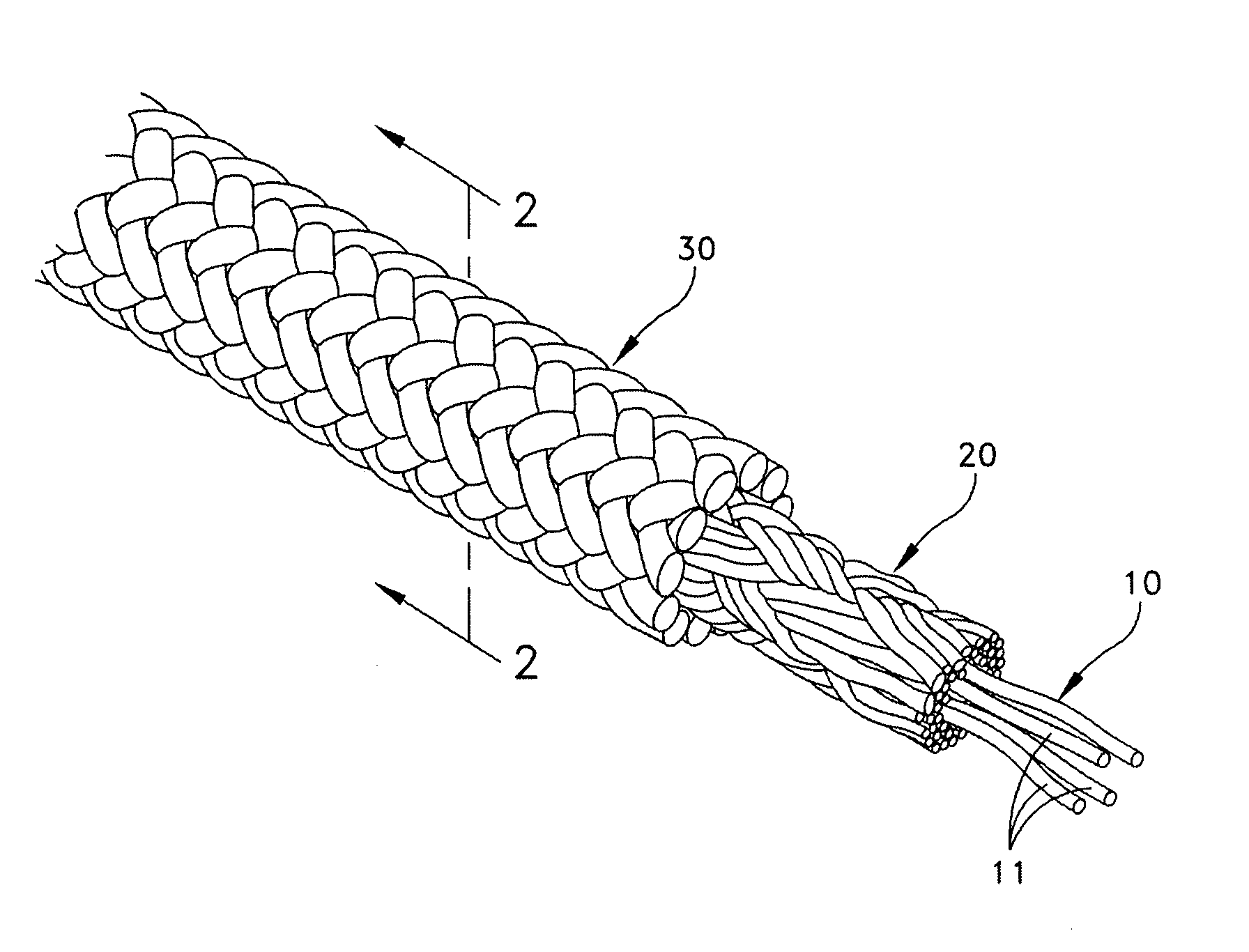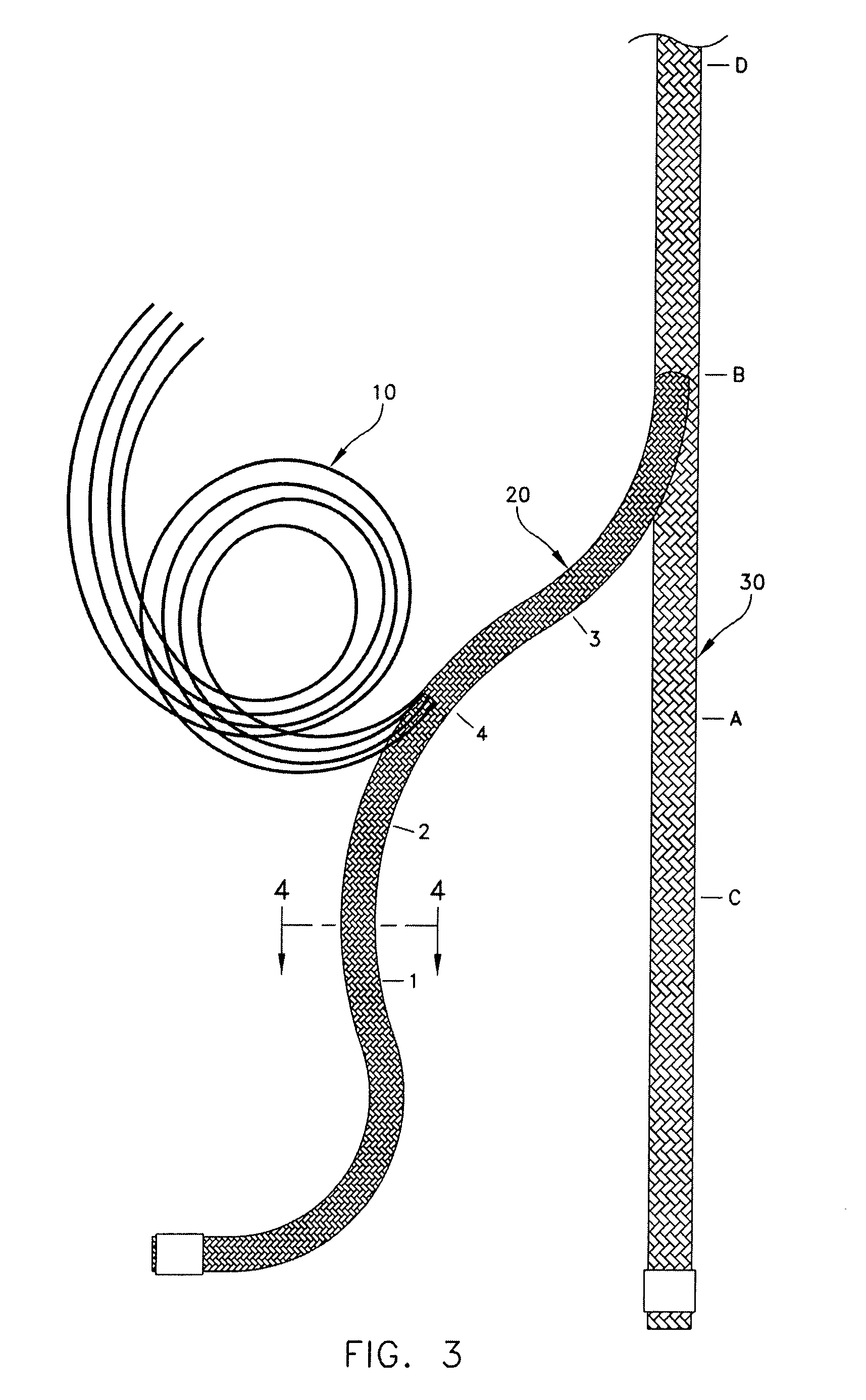Climbing rope
a technology of climbing rope and rope rope, which is applied in the field of climbing rope, can solve the problems of compromising firmness to enable splicing, too tight to enable splicing, and devices that are difficult to operate or even non-functional
- Summary
- Abstract
- Description
- Claims
- Application Information
AI Technical Summary
Benefits of technology
Problems solved by technology
Method used
Image
Examples
Embodiment Construction
[0016]Reference is now made to the drawings in which FIGS. 1 and 2 illustrate a preferred embodiment of the rope of the present invention. The remaining drawings show a sequence for forming a splice in the rope. The rope illustrated in the drawings is shown as being comprised of a core 10 of a plurality of strands 11, a first braided tubular sheath 20 disposed about the core and a second braided tubular sheath 30 disposed about the first braided tubular sheath 20. The plurality of strands of the core is illustrated as substantially completely filling a center void formed by the first braided tubular sheath 20. Refer to the cross-sectional view of FIG. 4 showing the void at 12. The plurality of strands 11 is preferably formed in an un-braided manner as either twisted or non-twisted strands. By the selective removal of a portion of the core by means of forming the rope with a double braid, the rope is partially evacuated at its center to allow space for the bulk from the tucking opera...
PUM
 Login to View More
Login to View More Abstract
Description
Claims
Application Information
 Login to View More
Login to View More - R&D
- Intellectual Property
- Life Sciences
- Materials
- Tech Scout
- Unparalleled Data Quality
- Higher Quality Content
- 60% Fewer Hallucinations
Browse by: Latest US Patents, China's latest patents, Technical Efficacy Thesaurus, Application Domain, Technology Topic, Popular Technical Reports.
© 2025 PatSnap. All rights reserved.Legal|Privacy policy|Modern Slavery Act Transparency Statement|Sitemap|About US| Contact US: help@patsnap.com



